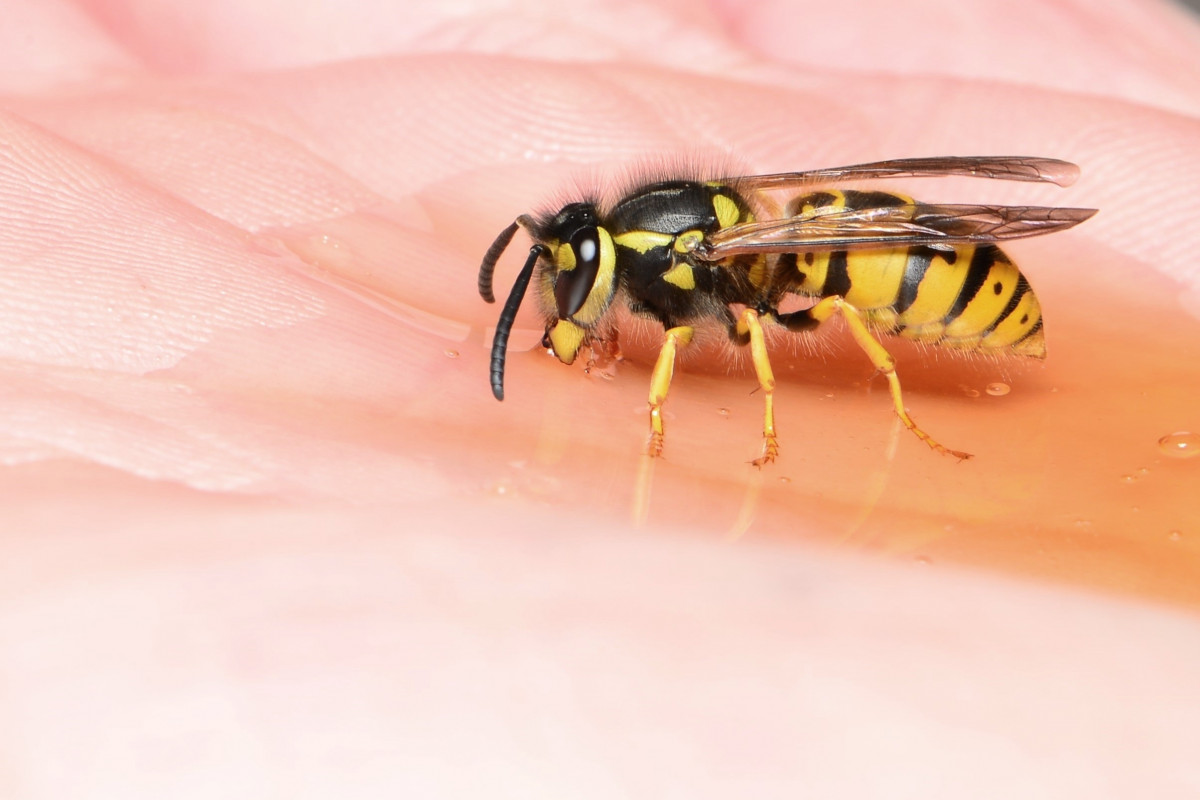A wasp bite is very painful and, in some cases, can even be life-threatening for a child. Every mum should know how to help and when to see a doctor urgently.
As a rule, wasps do not attack or sting for no reason, but you can provoke an attack simply by waving your arms, but this is most often a defensive reaction of the insect. If a child steps barefoot on a wasp or grabs it with the handle, the sting is unavoidable. Especially if the insect is in the mouth (which can happen if a wasp gets into a drink that the child is drinking), or if a large number of wasps gather, then they become particularly aggressive.
What to do if a child is stung by a wasp
- The first steps after an insect sting are the same as a bee sting, but there are some differences: First of all, reassure the child and do not panic. Also, it is important to get rid of wasps – unlike a bee, a wasp does not die after stinging and can therefore attack again.
- Rinse the sting site under cold running water; this can even be bottled water, as long as it is not sweet.
- If possible, make a soap solution or just use soap.
- Disinfect the area where the wasp stung with any antiseptic. Modern ones are chlorhexidine, betadine or you can use hydrogen peroxide.
- Apply something cold – ice from the freezer is best, wrapped in a cloth. The cold will stop the poison spreading through the baby’s body. The sooner the ice is applied, the less damage will be caused by hornet venom. A piece of refined sugar lightly moistened with water helps to draw out the venom.
Stop swelling and reduce pain
The place where the wasp has injected its venom is bound to swell, and in addition to quite severe pain, the child will feel an itching sensation. This is a local allergic reaction to the components of the venom, which, unlike bee venom, has an alkaline PH. To neutralize the alkali it should be applied with something acidic: lemon, apple, but the baking soda in this case is not suitable. If you are outdoors, try a plantain leaf, rinse it first and knead it in your fingers. Use pharmacy antihistamine gels and ointments. You can give your child an ibuprofen or paracetamol-based pain reliever approved for children. Even if the child is not allergic to wasp venom, pediatricians recommend giving an antihistamine after the sting to prevent it.
You can give your child an ibuprofen or paracetamol-based painkiller approved for children. Even if the child is not allergic to wasp venom, pediatricians recommend giving an antihistamine after the sting to prevent it.
